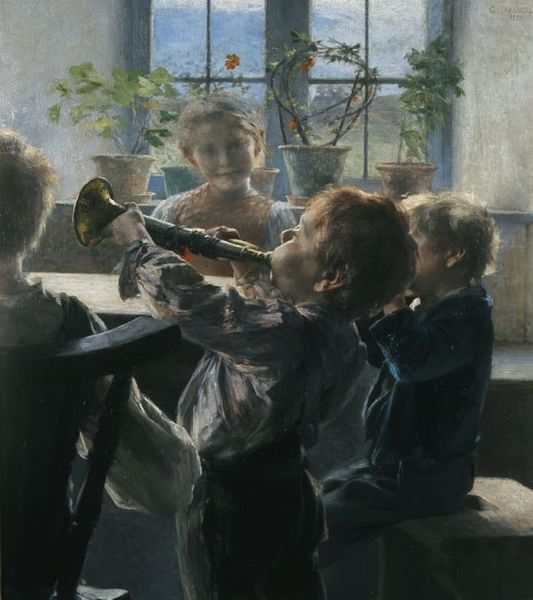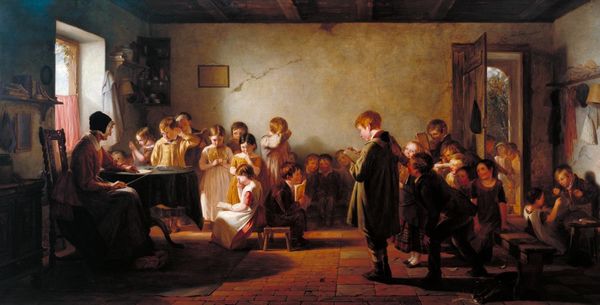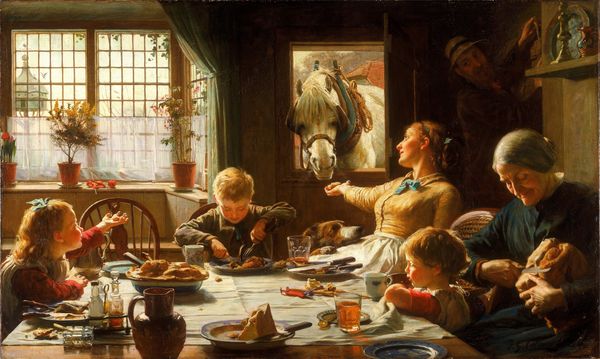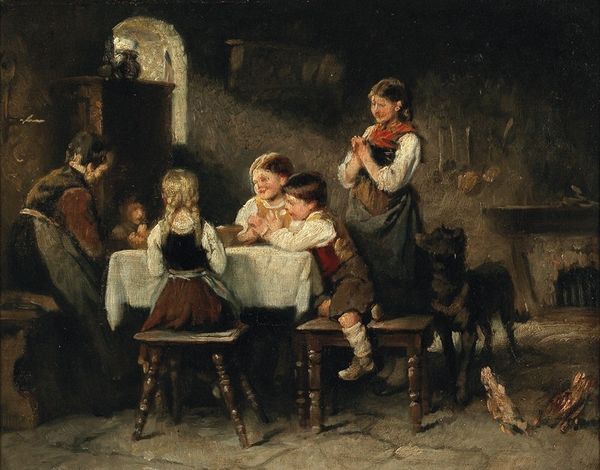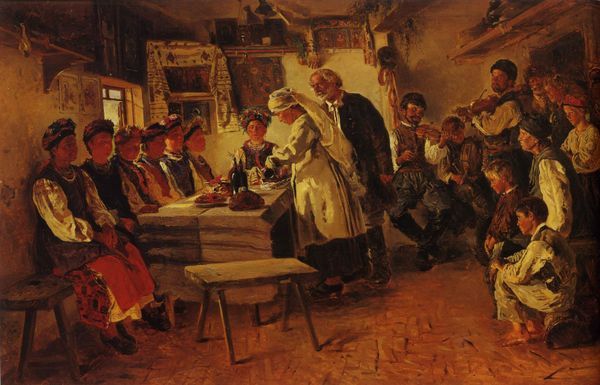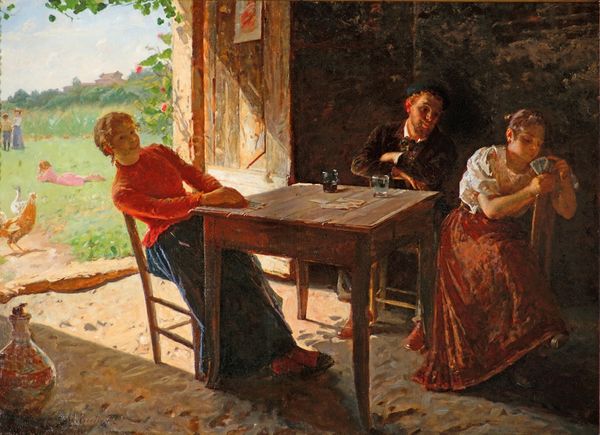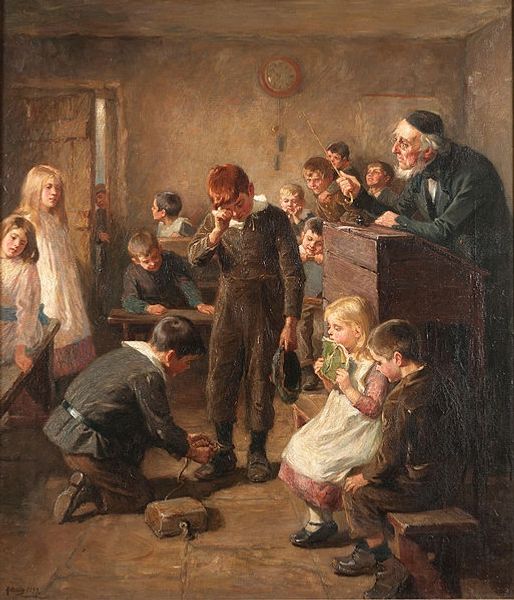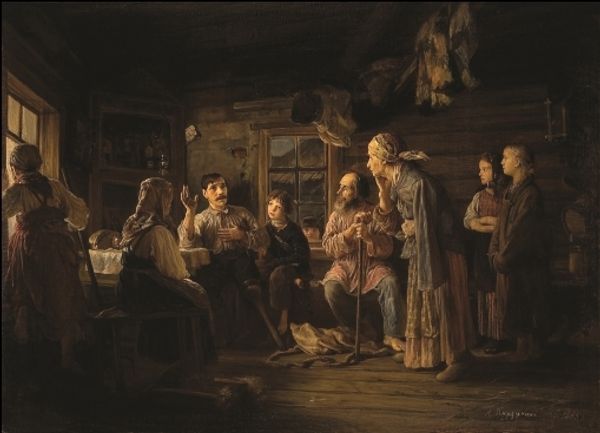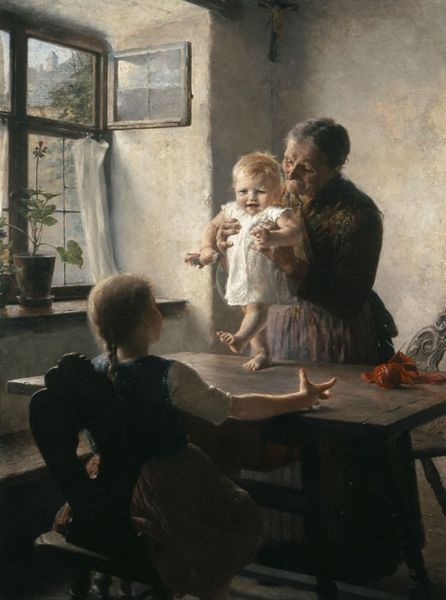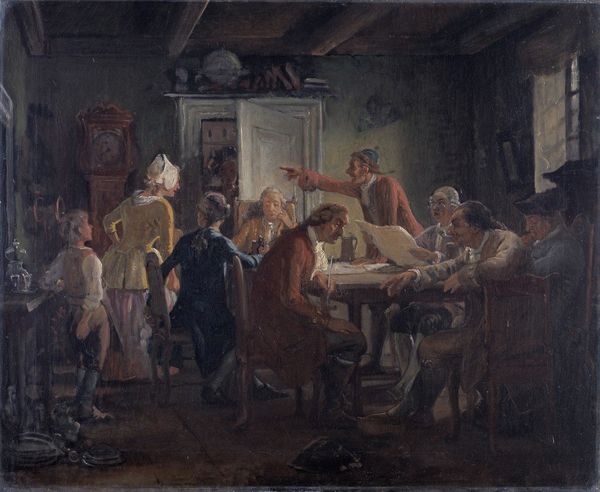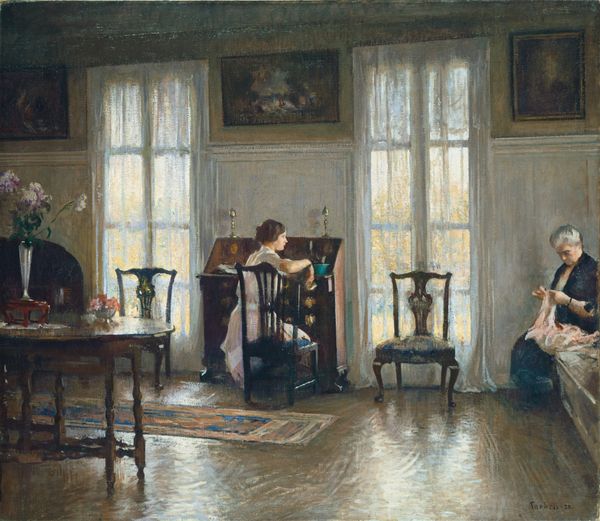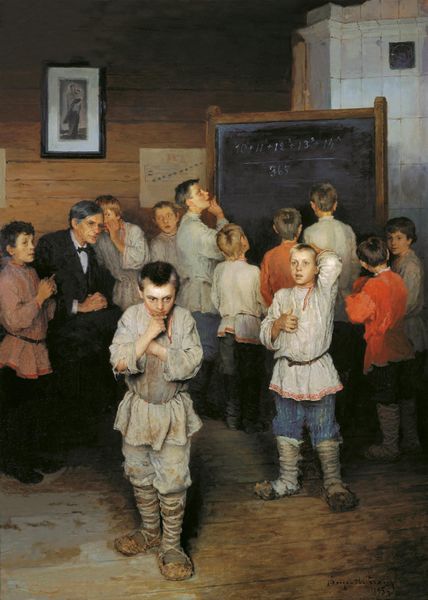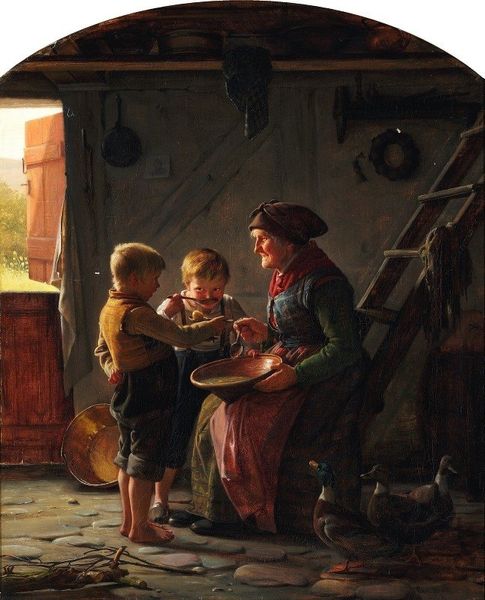
Copyright: Public domain
Curator: Look at the joyful chaos! What strikes you first about this painting? Editor: Pure nostalgia. It has a certain glow, a golden warmth, but a frenetic energy. Curator: It’s Georgios Jakobides’s "Children's Concert," painted around 1900. You sense the scene well—Jakobides captures that moment of unstructured, domestic merriment. Notice the objects each child has in their hands to play a concert. The work resonates with genre painting—where everyday life becomes the subject. Editor: Yes, I feel the era coming through, in what it communicates and perhaps tries to conceal. The kids at play—look closely at how their individual personalities come alive! This domestic harmony is so... deliberate, isn't it? Curator: Deliberate, perhaps, yet heartfelt. Each element contributes—from the children's expressions to the specific light playing across the scene—creating a powerful sense of place and a shared activity. Editor: But consider the period. The rise of photography threatened painting’s role as documentarian. Did this drive artists towards capturing heightened emotion, seeking to justify their place in a rapidly changing cultural landscape? Is the symbol that potent? Curator: Possibly. The painting could also represent an idealized version of childhood. There are multiple potential meanings here—a snapshot of youthful freedom, and a reflection on societal values— all within one deceptively simple composition. Editor: An interesting point. Viewing it this way adds another dimension. What we initially perceive as an uncomplicated depiction is, in reality, charged with layered cultural significance. Curator: Exactly, Jakobides presents a specific representation of children that resonated with audiences of the period, and it can give us some hints of its audience in modern days as well. He gives permanence to ephemeral joys, shaping our memory and experience of it all through symbolic means. Editor: A cultural snapshot frozen in time, revealing perhaps as much about us as it does the artist and their era. A worthy piece.
